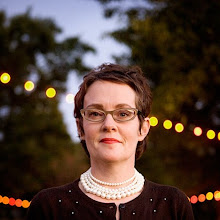
Pieter Hugo
Abdullahi Mohammed with Mainasara, Ogere-Remo, Nigeria, 2007
digital c-print
© Pieter Hugo, Courtesy Yossi Milo Gallery, New York and Michael Stevenson Gallery, Cape Town, Courtesy the Margulies collection at the WAREHOUSE, Miami
Hyacinthe Rigaud
Hans William Bentinck, Earl of Portland, K.G., 1698-1699
oil on canvas
Collection Bass Museum of Art
I'm asking a range of curator colleagues from around the world to send me brief posts about what they are up to or thinking about as part of the continued (hoped for) critique here.
For my first Curator's Forum I've invited Silvia Cubina, director of the Bass Art Museum and most recently director of The Moore Space, Miami. I met Silvia in Milwaukee many years ago through inova, and have gotten to know her through our various roommate experiences.
Silvia has recently made the leap from working at a kunsthalle to an encyclopedic museum. Given how the art world and art market is so obsessed with the contemporary, leaving historical context behind, how does a contemporary curator create a dialogue between these two areas of research? Artists need to know at least some history in order to understand the world they have inherited, just as curators need to know history in order to educate audiences (my favorite insight was when I was working with Yoshitomo Nara, and I asked him if he knew Giotto's work since there seemed some lovely formal overlap. It turns out Nara has been greatly influenced by that Italian master.)
Silvia's notes on "The Endless Renaissance," a show juxtaposing the Bass's eclectic collection with the rush rush contemporary community around it:
"'The Endless Renaissance' addresses the perceived polarization in Miami between contemporary art and art that was made in the past. Our city is swimming in the best contemporary art today. Contemporary art, nevertheless, was not created in a temporal void and the dialogue 'The Endless Renaissance' creates with old master works serves to reflect on thematic and art historical references that make all art richer and more layered in meaning and thought."
The show's primary intention is to demonstrate that the Rigaud was just as contemporary in its presentation of politics as is the Hug. The figures are enormously different, however: the Hugo figure is from a family of hyena handlers who make a living doing performances, while the Rigaud figure is of a patrician politician, who helped the British extend their colonial rule.
It seems that the Bass Museum can take advantage of the hiccup in the contemporary market and introduce some notions of the past in that new town of Miami.




No comments:
Post a Comment